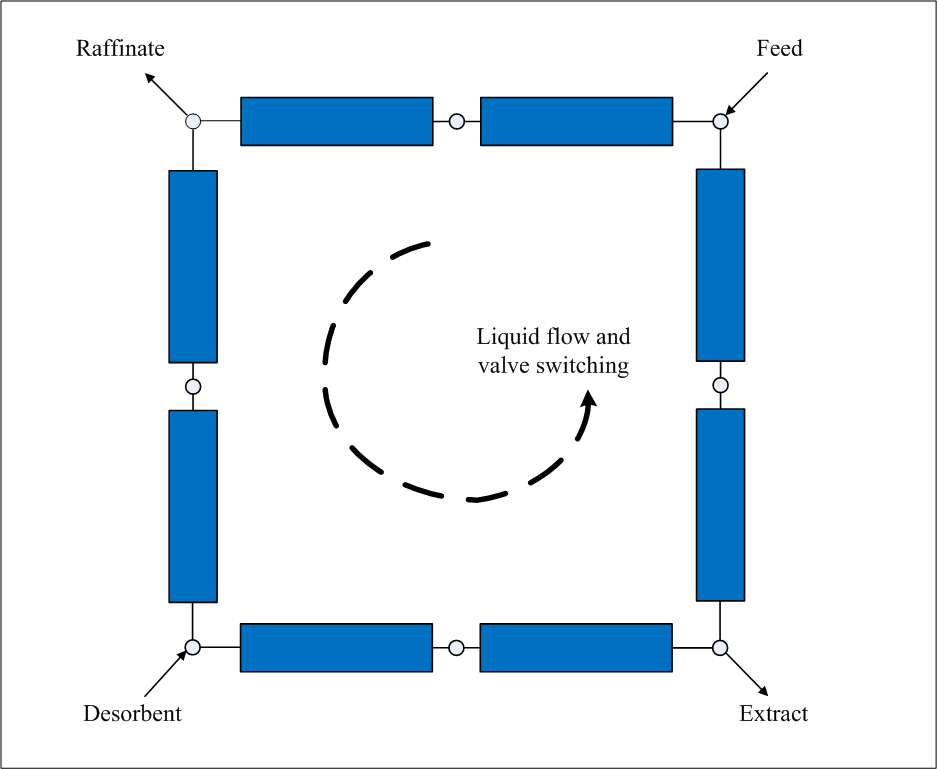
|
Optimization of Periodic Processes |

|
Simulated Moving Bed System |
|
Periodic Adsorption Processes (PAPs) have gained increasing commercial acceptance as an efficient separation technique for a wide range of applications. Industrial applications of PAPs include vacuum swing adsorption to separate oxygen from air, pressure swing adsorption to separate hydrogen from hydrocarbons and simulated moving bed chromatography to separate enantiomers in the liquid phase. These processes consist of vessels or beds packed with a solid adsorbent. The adsorbent is brought in contact with a multi-component feed mixture and the separation of the components is based on the difference in the affinity towards the adsorbent particles. Unlike most processes, e.g. distillation which operates at steady state conditions, PAPs operate under periodic transient conditions with each bed repeatedly undergoing a sequence of steps. Because of the periodic operation, these processes reach a cyclic steady state (CSS), where the concentration profiles change dynamically and the profiles at the beginning of each cycle match with those at the end of the cycle. With increasing industrial applications, there is significant interest for an efficient modeling, simulation and optimization strategy for PAPs. However, despite a vast growth in the practical application of PAPs, the design and optimization of PAPs still largely remains an experimental effort for several reasons. Firstly, most practical PAPs are complex systems coupled by non-linear partial differential and algebraic equations (PDAEs) in time and space domains with different initial and boundary conditions defining the steps of the process. The computational effort required to solve these systems is usually quite expensive and hence time-consuming. Secondly, multi-adsorbent layers, non-isothermal effects and stringent product specifications result in high non-linearities and ill-conditioning which lead to the failure of numerical solvers. Most importantly, the CSS operation yields dense constraint Jacobians, where the time required for the computation of the Jacobian and its factorization dominates the overall optimization process. Previous works on the optimization of Simulated Moving Bed and Pressure Swing Adsorption systems report that almost 90 % of the CPU time was spent by the integrator in evaluating the dense constraint Jacobians. Hence, the efficient handling of constraint Jacobians, ill-conditioning and non-linearities is essential to evaluate proposed designs and optimize a new design for existing installations, which is the main objective of this work. |